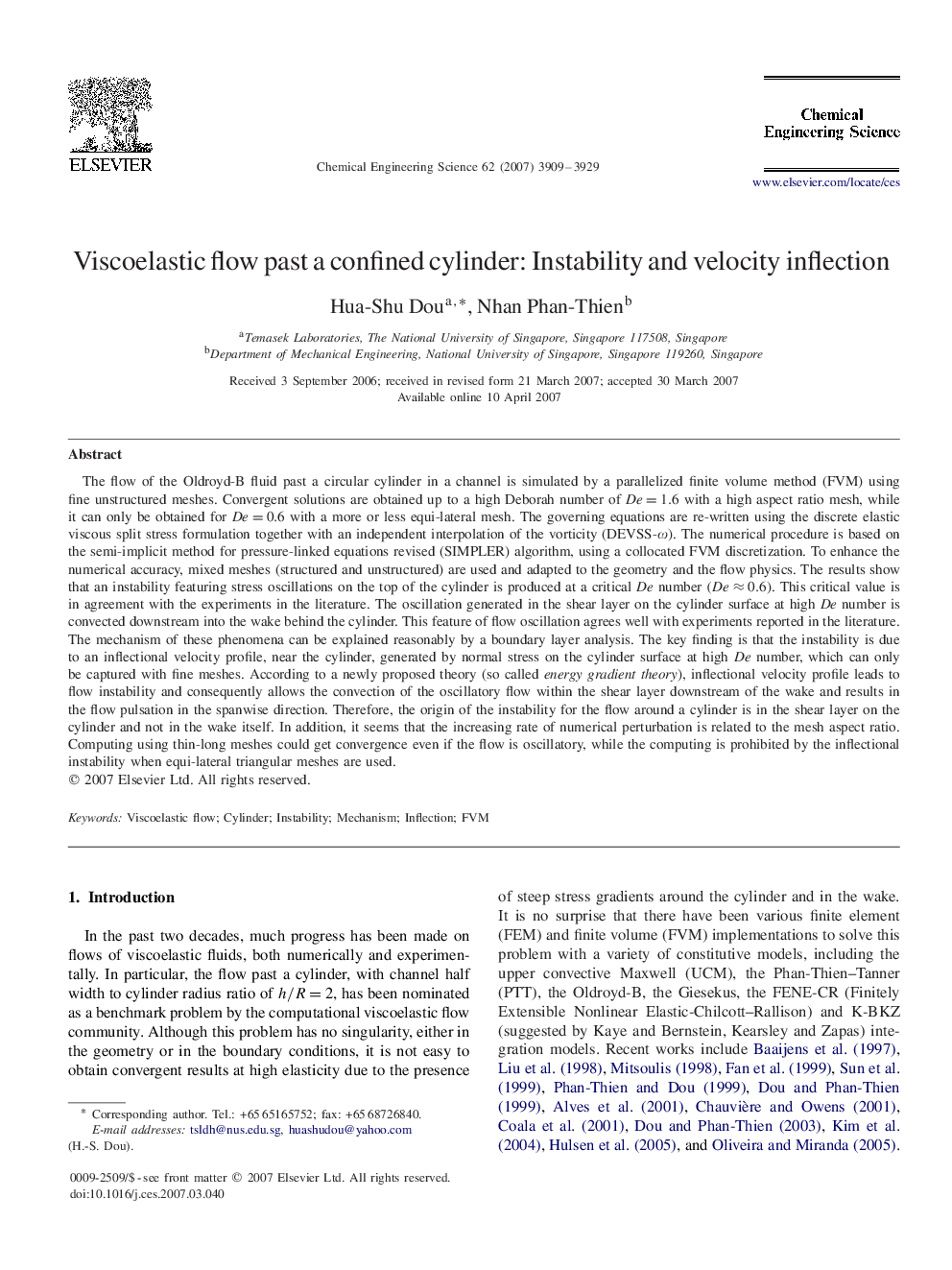| کد مقاله | کد نشریه | سال انتشار | مقاله انگلیسی | نسخه تمام متن |
|---|---|---|---|---|
| 158121 | 456996 | 2007 | 21 صفحه PDF | دانلود رایگان |

The flow of the Oldroyd-B fluid past a circular cylinder in a channel is simulated by a parallelized finite volume method (FVM) using fine unstructured meshes. Convergent solutions are obtained up to a high Deborah number of De=1.6De=1.6 with a high aspect ratio mesh, while it can only be obtained for De=0.6De=0.6 with a more or less equi-lateral mesh. The governing equations are re-written using the discrete elastic viscous split stress formulation together with an independent interpolation of the vorticity (DEVSS-ω)ω). The numerical procedure is based on the semi-implicit method for pressure-linked equations revised (SIMPLER) algorithm, using a collocated FVM discretization. To enhance the numerical accuracy, mixed meshes (structured and unstructured) are used and adapted to the geometry and the flow physics. The results show that an instability featuring stress oscillations on the top of the cylinder is produced at a critical De number (De≈0.6)(De≈0.6). This critical value is in agreement with the experiments in the literature. The oscillation generated in the shear layer on the cylinder surface at high De number is convected downstream into the wake behind the cylinder. This feature of flow oscillation agrees well with experiments reported in the literature. The mechanism of these phenomena can be explained reasonably by a boundary layer analysis. The key finding is that the instability is due to an inflectional velocity profile, near the cylinder, generated by normal stress on the cylinder surface at high De number, which can only be captured with fine meshes. According to a newly proposed theory (so called energy gradient theory), inflectional velocity profile leads to flow instability and consequently allows the convection of the oscillatory flow within the shear layer downstream of the wake and results in the flow pulsation in the spanwise direction. Therefore, the origin of the instability for the flow around a cylinder is in the shear layer on the cylinder and not in the wake itself. In addition, it seems that the increasing rate of numerical perturbation is related to the mesh aspect ratio. Computing using thin-long meshes could get convergence even if the flow is oscillatory, while the computing is prohibited by the inflectional instability when equi-lateral triangular meshes are used.
Journal: Chemical Engineering Science - Volume 62, Issue 15, August 2007, Pages 3909–3929